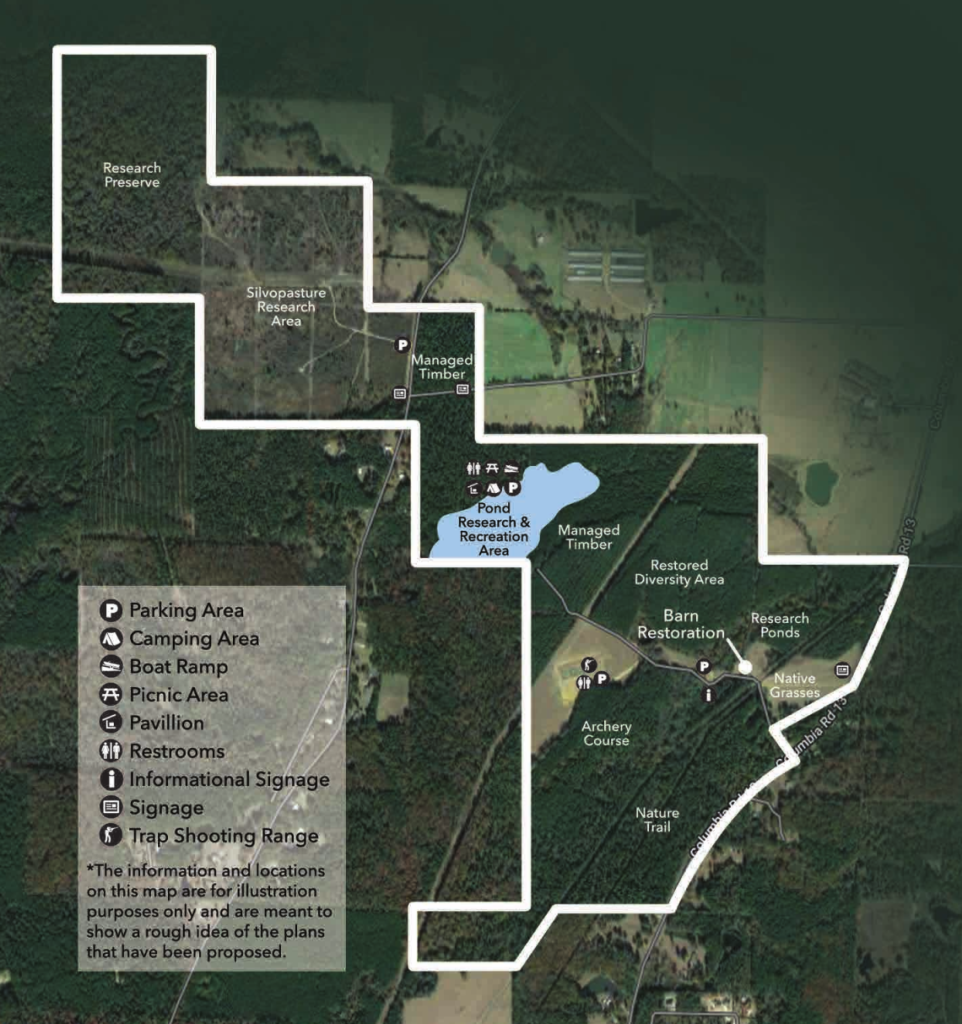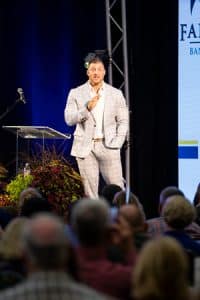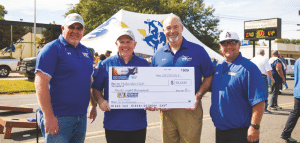Students, faculty, and staff have acres of new classroom space for field research, hands-on learning, and competition. SAU’s partnership with the Arkansas Game and Fish Commission (AGFC) is making the SAU Outdoor Campus possible.
Until 2019, the primary use of the nearly 700-acres included hay production to support operation of the SAU Farm and timber management. The completion of the FB&T Trap Shooting Range and the addition of the SAU Department of Biology Scientific Study Area caught the attention of AGFC Commissioner J.D. Neeley, Director Austin Booth, and other AGFC leaders.
Last summer, the SAU Outdoor Campus planning team, consisting of faculty, staff, administration, as well as AGFC experts held a two-day strategic planning workshop led by Tabbi Kinion, AGFC Education Division Chief. A 10-year development plan that includes enhancements to support academic and recreational opportunities for the campus and the community was created.
The vision for the SAU Outdoor Campus includes accessible facilities and infrastructure, expanded recreational and educational opportunities, an engaged and active surrounding community, restored and sustainable native wildlife habitat, dedicated educational research space, and sustainable land management models.
Sustainable timber management will continue to be a priority, with a renewed focus on forest management for the renewal of wildlife habitats and species diversity. Silvopastures for farm operations and cattle research will be introduced. A large pond will be added to serve as a research facility, offer fishing opportunities, and be utilized by the AGFC Family and Community Fishing Program.
Year one projects include the creation of a 3-D archery course and a fixed distance archery range. Also planned for year one is the expansion of the existing trap shooting facility from 3 fields to 5 fields to make possible more youth trap shooting competitions in South Arkansas.
Enhancements to the existing nature trail are currently ongoing. The interpretive nature trail improvements should be completed by early summer 2023. The strategic plan also includes the addition of several trails to create multiple options for outdoor enthusiasts.
A series of shallow ponds for ecological research are included in the plan, as well as the establishment of field research stations for the College of Science and Engineering. Currently, students and faculty conduct research projects on the property, and the expansion of research opportunities will broaden their efforts. For example, when you see a piece of tin laying on the ground, don’t pick it up! That is snake habitat research. Bird boxes are visible on poles and trees throughout the property, and students can be seen collecting plankton in the existing ponds.
The creation of pollinator gardens, quail habitats (the hopeful return to the song of the Bob White), maintaining and enhancing waterfowl habitats, and building facilities to support expanded community use are also part of the plan. Land management plans include improving the forest and eradicating invasive species. AGFC has hosted Learn to Burn workshops at the Outdoor Campus, with plans to schedule more in 2023. Additional AGFC workshops and activities will be hosted at the Outdoor Campus as projects move from planning to development.
For more information about the SAU Outdoor Campus, contact Sheryl Edwards at (870) 235-5090 or via email at saedwards@saumag.edu.






